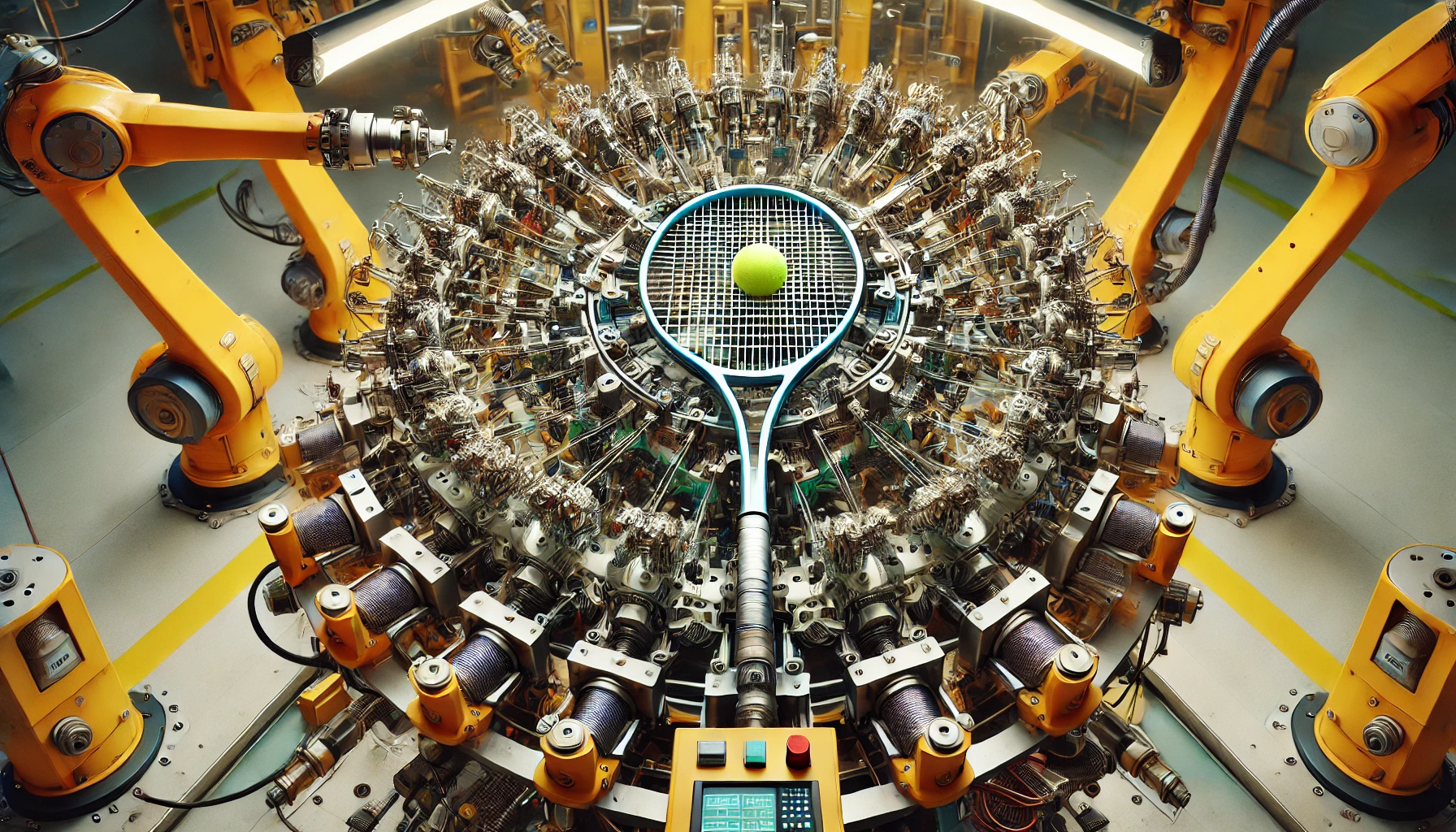Why is there no such thing as a bad idea?
Because iteration and innovation have a way of transforming even the simplest concepts into groundbreaking advancements.
Take tennis, for instance. Since Major Walter Clopton Wingfield patented “lawn tennis” in 1873-74, the sport’s fundamentals and rules have remained remarkably consistent.
That’s because the rules of the game were intentionally difficult to comprehend to create an aura of exclusivity. Yet innovation has quietly reshaped the game in ways that echo through history.
Let’s travel back to 1875, during the Gilded Age. This was the year Pierre Babolat revolutionized tennis by inventing gut strings and creating the first tennis stringing machine.
Nearly 150 years later, the essence of his invention remains unchanged. Modern stringing machines are still simple at their core—relying on human hands to pull each string with precision, their design grounded in the same principles established over a century ago.
It’s a testament to how even the most straightforward ideas can endure and evolve through the power of human ingenuity.
Manual & Electric Stringing Machine Components
1. A platform where the racquet rests
2. Clamps to secure the racquet
3. A string pulling tool
New Patented Tech: Automatic Stringing Machine
Earlier I mentioned that a human is needed to pull each string. That’s sort of still the case with some new tennis technology that will be (hopefully) arriving on the market in the near future.
A human still has to pull each string through the grommet. But once all 35 strings are pulled through the grommets (16 mains x 19 crosses) the stringer can set it and forget it. Allowing them to begin working on additional racquets. With 3 automatic machines, I imagine a stringer with experience using this machine can knock out 8-10 racquets an hour. With a traditional manual or electronic machine, a stringer can finish 2-3 racquets per hour.
I say this because today I came across a discovery on Instagram that has been a long time coming. We have what looks like first automated tennis racquet stringing machine. The machine uses robotic arms and compressed air—known as a pneumatic system—to pull the strings tight. I did a quick search on the USPTO site and found a patent that was filed by Matt Polson in June 2018.
I tip my hat to Matt. This is a tennis tech innovation that has been a long time coming.
Disclaimer: the author was not paid to write this and has no affiliation to Matt Polson or The Tennis Doctor.
The Tennis Doctor:
This machine is the world's most consistent/accurate approach to stringing a racquet, capable of stringing a racquet in 11 minutes with only a couple minutes of human setup and takedown time. This allows one operator to put out a racquet every 4 to 6 minutes when operating 2-3 machines in a cycle.
The machine runs a couple phases: Clearing (tennis string guide), the first stretch of nylon string, final tension, and lastly, removal of tensioning ribbons leaving the racquet for tying off starting and ending knots.

